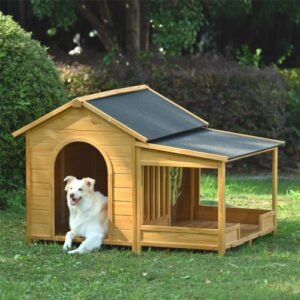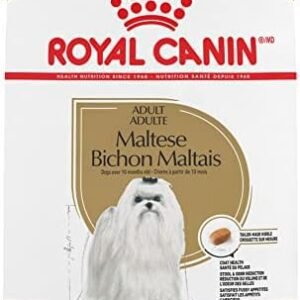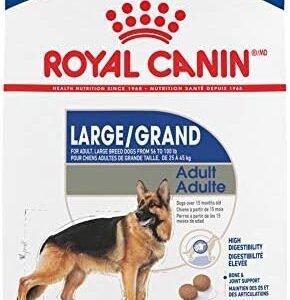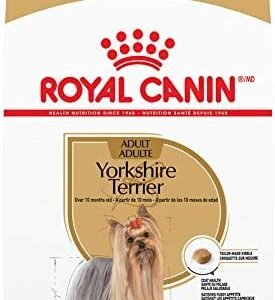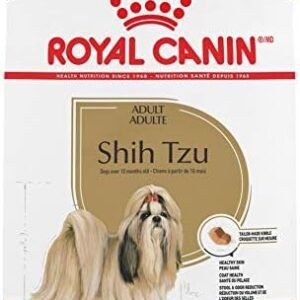Introduction
Are snap peas safe for your four-legged companion? You might be surprised to learn that snap peas are among the most celebrated foods in the world. They’re crisp, refreshing, and packed with nutrients. But what about your furry friend? Can dogs enjoy these delectable greens? In this article, we embark on a journey to uncover the truth behind feeding snap peas to your canine companion. We’ll delve into the intriguing world of dog nutrition and determine whether these crunchy legumes make a healthy and delicious treat for your beloved pet.

Dogs are an essential part of our families, and their well-being is of utmost importance to us. We pamper them with love and attention, but it’s equally vital to consider their dietary needs. While dogs primarily thrive on a diet specially formulated for them, it’s essential to know which human foods can be included in their meals without compromising their health.
In this article, we will address the question: can dogs eat snap peas? We’ll explore the advantages and disadvantages of incorporating snap peas into your dog’s diet, helping you make an informed decision regarding this popular veggie. Whether you’re a concerned pet parent or just curious about canine cuisine, join us in uncovering the facts about snap peas and dogs.
Table of Contents
Can Dogs Eat Snap Peas?
Many pet owners are curious about whether snap peas are safe for their canine companions. These delightful, crunchy green vegetables are a popular choice in human diets due to their refreshing taste and nutritional value. But what about dogs? Can they enjoy snap peas without any adverse effects? In this section, we will explore the safety and nutritional aspects of feeding snap peas to dogs, helping you make informed decisions about incorporating them into your pet’s diet.
Are Snap Peas Safe for Dogs?
Snap peas are generally considered safe for dogs to consume. They are non-toxic and not known to cause any immediate harm. Some dogs may even relish the taste of these crunchy legumes. As with any new food introduction, it’s essential to observe your dog’s response and digestion when offering snap peas for the first time. Start with a small quantity to ensure they don’t experience any adverse reactions.
Nutrition Facts of Snap Peas
Let’s take a closer look at the nutritional composition of snap peas. The table below highlights the key nutrients present in snap peas and their potential benefits for dogs:
| Nutrient | Value per 100g of Snap Peas | Potential Benefits for Dogs |
|---|---|---|
| Calories | 42 kcal | Provides a low-calorie, healthy snack. |
| Carbohydrates | 7.55g | A source of energy and dietary fiber. |
| Protein | 2.8g | Contains plant-based protein. |
| Dietary Fiber | 2.6g | Supports digestion and bowel regularity. |
| Vitamin C | 58.8mg | An antioxidant that boosts the immune system. |
| Vitamin K | 24.8µg | Aids in blood clotting and bone health. |
| Folate | 65µg | Necessary for cell division and growth. |
| Iron | 1.2mg | Important for oxygen transport in the body. |
| Potassium | 200mg | Helps maintain healthy blood pressure. |
While snap peas offer several potential health benefits for dogs, including vitamins, minerals, and dietary fiber, it’s crucial to remember that they should complement, not replace, your dog’s primary diet. They can serve as a low-calorie, healthy snack option, but snap peas alone do not provide a complete and balanced diet for your canine companion.
Drawbacks of Feeding Snap Peas to Dogs
While snap peas are generally safe and nutritious for dogs, there are a few potential drawbacks to consider:
Gas and Digestive Issues: Some dogs may experience flatulence or digestive discomfort when introduced to snap peas. It’s essential to monitor your dog’s reaction and adjust the portion size accordingly.
Sodium Content: Snap peas contain a small amount of sodium. While this is generally not a concern, it’s advisable to avoid feeding excessively salty foods to your dog. Excess sodium can lead to dehydration and other health issues.
Choking Hazard: Snap peas, like other small, round foods, can pose a choking hazard, particularly for small dogs. To mitigate this risk, ensure snap peas are cut into manageable pieces.
- Allergies: While snap peas are not known to be common allergens for dogs, it’s possible for individual dogs to have allergic reactions to certain foods. Always be cautious when introducing new foods to your pet’s diet.
Appropriate Serving Sizes of Snap Peas
The appropriate serving size of snap peas for your dog depends on their size, weight, and individual tolerance. Here are some general guidelines based on dog weight:
- Small dogs (up to 20 pounds): 1-2 snap peas per serving.
- Medium dogs (20-50 pounds): 3-4 snap peas per serving.
- Large dogs (50+ pounds): 5-6 snap peas per serving.
Always start with a small portion to assess your dog’s response and gradually increase the serving size as needed. Additionally, it’s essential to consider the overall calorie intake from snap peas in the context of your dog’s daily caloric requirements.
In the following sections, we will delve deeper into the potential risks and benefits of feeding snap peas to dogs, including information on allergies, digestive issues, and creative ways to incorporate this vegetable into your pet’s diet.
How Much Snap Peas Can a Dog Eat?
When it comes to feeding snap peas to your dog, moderation is the key to ensuring their safety and enjoyment. In this section, we’ll discuss the appropriate portion sizes, preparation methods, and considerations based on your dog’s size and breed.
The Importance of Moderation
While snap peas can be a healthy and tasty addition to your dog’s diet, they should not constitute a large portion of their daily calorie intake. As with any treat or supplement, it’s crucial to strike a balance. A rule of thumb is that treats and extras should make up no more than 10% of your dog’s daily calorie intake. The majority of their calories should come from their primary, well-balanced dog food.
Start Small and Observe
Before offering a full serving of snap peas to your dog, begin with a small piece and observe how they react. Some dogs may take to snap peas right away and enjoy the crunchy texture, while others may be more hesitant. By starting with a small portion, you can ensure that your dog doesn’t experience any adverse reactions, such as digestive discomfort or allergies.
Proper Preparation
Snap peas should be prepared appropriately before offering them to your dog. First, wash the snap peas thoroughly to remove any dirt or pesticides. Next, trim the ends and remove any tough strings to prevent choking hazards. While humans often enjoy raw snap peas, cooking them lightly can make them easier for your dog to digest. Steaming or blanching snap peas until they are tender but still crisp can make them more palatable for your pet.
Size and Breed Considerations
The appropriate serving size of snap peas for your dog can be influenced by their size, breed, and individual tolerance. Larger dogs generally can tolerate larger portions, while smaller dogs should receive smaller servings.
Here are some general guidelines based on dog weight:
- Small dogs (up to 20 pounds): Start with one or two snap peas per serving.
- Medium dogs (20-50 pounds): Begin with three to four snap peas per serving.
- Large dogs (50+ pounds): Offer five to six snap peas per serving.
Remember that these are starting points, and it’s important to gauge your dog’s response. If your dog handles snap peas well and enjoys them, you can adjust the serving size accordingly. The goal is to maintain moderation and balance within your dog’s overall diet.
Dietary Considerations
Incorporating snap peas into your dog’s diet should take into account their daily calorie intake and specific nutritional needs. It’s advisable to consult with your veterinarian or a professional canine nutritionist if you’re uncertain about how snap peas fit into your dog’s overall diet plan. They can provide you with specific recommendations based on your dog’s individual requirements.
Conclusion of This Section
In summary, when introducing snap peas into your dog’s diet, start small, cook them for easier digestion, and maintain moderation. Consider your dog’s size and breed when determining the appropriate serving size. As we move forward in this article, we’ll explore the potential risks and benefits of feeding snap peas to dogs, addressing topics such as allergies, digestive concerns, and creative ways to make this healthy vegetable a part of your pet’s diet.
Risks of Feeding Snap Peas to Dogs
While snap peas can offer numerous health benefits to dogs, it’s essential to be aware of the potential risks associated with feeding them to your furry friend. In this section, we will address these risks, which include food allergies, gastrointestinal distress, potential hazards related to specific components of snap peas, and adverse reactions. Being informed about these risks will help you ensure the well-being of your pet.
Food Allergies
Food allergies are possible in dogs, just as they are in humans. Some dogs may be sensitive or allergic to specific foods, and snap peas are no exception. When introducing snap peas into your dog’s diet for the first time, monitor them closely for any signs of an allergic reaction. Symptoms of food allergies in dogs can include:
- Itchy or red skin
- Hives
- Ear infections
- Vomiting
- Diarrhea
- Sneezing
- Coughing
- **Wheezing or difficulty breathing
If your dog experiences any of these symptoms after consuming snap peas, it’s crucial to discontinue feeding them this food and consult with your veterinarian. Food allergies can cause discomfort and potentially severe health issues if left unaddressed.
Gastrointestinal Distress
Gastrointestinal distress is a short-term concern when introducing snap peas to your dog’s diet. Some dogs may experience digestive discomfort, such as gas, diarrhea, or loose stools, after consuming snap peas. This can be due to the fiber content of snap peas, which can lead to changes in bowel movements for some dogs.
To mitigate the risk of gastrointestinal distress, it’s important to start with a small portion of snap peas and monitor your dog’s response. Cooking the snap peas lightly and removing any tough strings can make them easier to digest. By steaming or blanching the snap peas until they are tender but still crisp, you can reduce the likelihood of digestive issues.
Potential Hazards in Snap Peas
Snap peas themselves are not inherently hazardous for dogs. However, there are certain components in snap peas, such as the sugar content, that you should be cautious about. The sugar content in snap peas is relatively low compared to some other vegetables, but it’s still important to consider, especially if your dog has dietary restrictions or health concerns related to sugar consumption.
Excessive sugar consumption can lead to weight gain and dental problems, such as tooth decay, in dogs. If you are feeding snap peas to your dog as a treat, be mindful of the overall sugar content in their diet. While snap peas can be a nutritious addition, moderation is key.
Signs and Symptoms of Adverse Reactions
If your dog experiences adverse reactions to snap peas, you should be able to identify the signs and symptoms promptly. Here are some common indicators of adverse reactions to watch out for:
- Vomiting
- Diarrhea
- Lethargy
- Excessive drooling
- Hives or skin irritation
- Gas or bloating
- **Difficulty breathing
- **Swelling of the face or extremities
If your dog displays any of these signs after consuming snap peas, consult with your veterinarian for guidance. It’s crucial to address any adverse reactions promptly to ensure your dog’s health and well-being.
In the next section, we will explore creative ways to make snap peas more enjoyable for your dog and provide some delicious recipes that incorporate this healthy vegetable into your pet’s diet. Additionally, we’ll discuss the various precautions you can take to minimize the risks associated with feeding snap peas to your dog.
How to Feed Snap Peas to Your Dog and Make It Enjoyable
Incorporating snap peas into your dog’s diet can be a nutritious and enjoyable experience for both you and your furry friend. In this section, we will explore various ways to feed snap peas to your dog, including as standalone snacks, creative meal enhancements, and homemade treats. We will also share some delicious recipes and ideas to make snap peas more appealing and flavorful for your canine companion.
Feeding Snap Peas to Your Dog
Fresh Snap Peas: One of the simplest ways to introduce snap peas to your dog is to offer them fresh. Fresh snap peas are crunchy and can be a delightful treat for many dogs. You can serve them as a snack or side dish.
Blanched Snap Peas: To make snap peas easier to digest and more appealing, blanch them by briefly boiling in water, then cooling them quickly in an ice bath. This retains their vibrant green color and crisp texture, making them a more tempting option for your dog.
Steamed Snap Peas: Steaming snap peas is another method to enhance their palatability and digestibility. Steam until they are tender but still crisp, and then allow them to cool before serving.
Chopped or Mashed: Some dogs may prefer snap peas chopped into smaller pieces, while others may enjoy them mashed or pureed. Experiment to find the texture your dog prefers.
Incorporate in Meals: You can incorporate snap peas into your dog’s regular meals. Add a handful of blanched snap peas as a nutritious side dish to their kibble or homemade food.
Frozen Snap Peas: Frozen snap peas can be a refreshing treat, especially on hot days. They can provide your dog with a cooling and satisfying snack.
- Homemade Snap Pea Treats: Get creative and make your own snap pea treats for your dog. We will share some homemade treat recipes shortly.
Enhancing Your Dog’s Food with Snap Peas
If you want to make your dog’s meals more enjoyable, adding snap peas can be a nutritious and tasty way to do so. Here are some creative methods to enhance your dog’s food with snap peas:
Mix with Regular Food: Combine a handful of steamed or blanched snap peas with your dog’s regular food. This adds a burst of flavor and nutrition to their meal.
Blend into Dog Food: If your dog enjoys a smoother texture, blend snap peas and mix them into your dog’s food. This can make the vegetables less noticeable if your dog is a picky eater.
Snap Pea Toppers: Prepare a snap pea topping by sautéing them lightly with a bit of olive oil. Use this as a tasty topper for your dog’s food. It can add excitement to their meal and encourage them to eat their vegetables.
Homemade Snap Pea Treats for Dogs
Homemade treats are a wonderful way to show your dog some extra love and incorporate healthy ingredients like snap peas into their diet. Here are a couple of easy-to-make recipes:
Snap Pea Delights:
Ingredients:
- 1 cup snap peas (blanched and cooled)
- 1/2 cup oat flour
- 1/4 cup plain Greek yogurt
- 1 egg
Instructions:
- Preheat your oven to 350°F (175°C).
- Blend the snap peas until they form a smooth paste.
In a mixing bowl, combine the snap pea paste, oat flour, Greek yogurt, and egg.
- Mix until you have a dough.
- Roll the dough into small bite-sized balls or use cookie cutters to create fun shapes.
- Place them on a baking sheet.
- Bake for 15-20 minutes or until they are firm to the touch.
- Allow them to cool completely before serving.
Frozen Snap Pea Pops:
Ingredients:
- 1 cup steamed snap peas
- 1/4 cup low-sodium chicken or vegetable broth
Instructions:
- Blend the steamed snap peas and chicken or vegetable broth until you have a smooth mixture.
- Pour the mixture into ice cube trays.
- Freeze until solid.
- Serve one frozen snap pea cube as a refreshing treat to your dog.
By incorporating snap peas into your dog’s diet using these methods and recipes, you can make their meals more appealing and nutritious. The versatility of snap peas allows you to cater to your dog’s taste preferences while providing them with a wide range of health benefits. In the next section, we will address some common questions and concerns about feeding snap peas to dogs, helping you make informed decisions about your pet’s diet.
10 FAQs About Dogs Eating Snap Peas
As you consider adding snap peas to your dog’s diet, you may have several questions and concerns. In this section, we’ll answer some of the most frequently asked questions about dogs consuming snap peas.
Can Dogs Safely Eat Snap Peas?Yes, dogs can safely eat snap peas. They are a low-calorie, nutritious vegetable that can be a healthy addition to your dog’s diet.
Are Snap Peas Toxic to Dogs?Snap peas are not toxic to dogs. In fact, they offer various nutritional benefits when consumed in moderation.
What Nutrients Do Snap Peas Provide?
Snap peas are a good source of vitamins A, K, and C, as well as dietary fiber and several essential minerals like potassium and iron.
Can I Feed My Dog Raw Snap Peas?Yes, dogs can eat raw snap peas. However, some dogs may prefer blanched or steamed snap peas due to their softer texture.
How Much Snap Peas Can I Give to My Dog?Moderation is key. Depending on your dog’s size and weight, you can start with a small portion of snap peas and gradually increase it.
Can Snap Peas Be Used as Dog Treats?
Yes, snap peas can make excellent dog treats. They are a healthy alternative to commercial treats and are generally well-received by dogs.
What Are the Potential Risks of Feeding Snap Peas to Dogs?While snap peas are generally safe, there is a risk of overfeeding. Excessive consumption may lead to digestive upset. Also, dogs with certain food allergies may be sensitive to snap peas.
How Can I Prevent My Dog from Choking on Snap Peas?To prevent choking, make sure to cut snap peas into smaller pieces or offer them as a puree for dogs that have difficulty chewing.
Are Sugar Snap Peas Safe for Dogs?
Sugar snap peas, which are a variety of snap peas, are generally safe for dogs in moderation, similar to regular snap peas.
What Signs Should I Watch for After Feeding Snap Peas?After giving snap peas to your dog, observe them for any signs of gastrointestinal distress. Common symptoms may include diarrhea, vomiting, or gas.
In Conclusion
Snap peas are a nutritious and safe treat for dogs when served in moderation and with proper preparation. They can offer a refreshing change in your dog’s diet, provide essential nutrients, and serve as a tasty reward or snack. However, it’s essential to monitor your dog’s reaction and consult with your veterinarian if you have concerns about potential allergies or digestive issues. Overall, snap peas can be a healthy addition to your dog’s diet, contributing to their well-being and enjoyment. In the final section, we will conclude the article and offer some alternative treat options for your canine companion.
Conclusion
In conclusion, snap peas can be a delightful and healthy treat for your dog, provided they are served in moderation and prepared correctly. They offer a range of vitamins and minerals while being low in calories, making them an ideal addition to your dog’s diet. However, it’s crucial to understand that while snap peas are a nutritious snack, they should not replace your dog’s primary diet. As with any new food introduction, it’s essential to start with small portions to ensure your dog tolerates them well.
Remember to monitor your dog for any adverse reactions, especially if they have known food allergies or sensitivities. Signs of gastrointestinal distress may include diarrhea, vomiting, or excessive gas.
If you have any doubts or concerns about feeding snap peas to your dog, consult with your veterinarian. They can offer tailored advice based on your dog’s specific dietary needs and health considerations.
As an alternative to snap peas, there are several other safe and healthy treats you can offer your canine companion. Fruits like apples, bananas, and berries can make for tasty and nutritious rewards. Just be sure to remove any seeds, pits, or cores before serving.
Your dog’s well-being is a top priority, and by providing them with appropriate, balanced treats, you’re contributing to their overall health and happiness. Do you have any questions or experiences related to feeding snap peas to your dog? We’d love to hear from you in the comment section below. Share your thoughts and join the conversation!




















